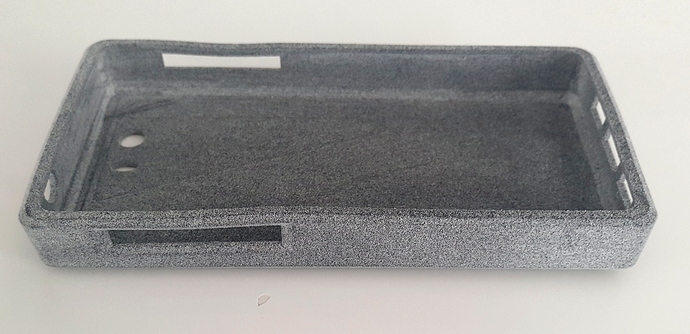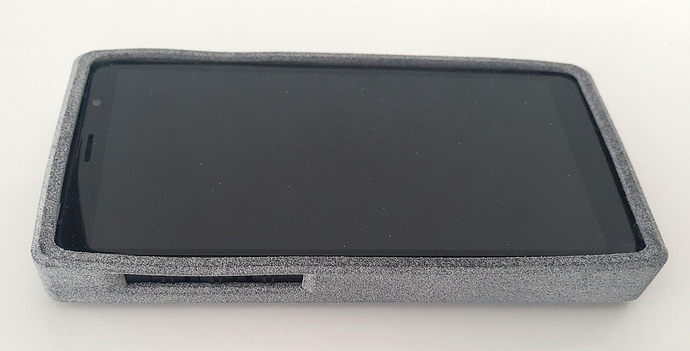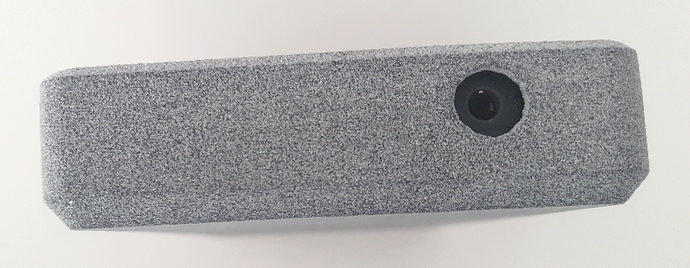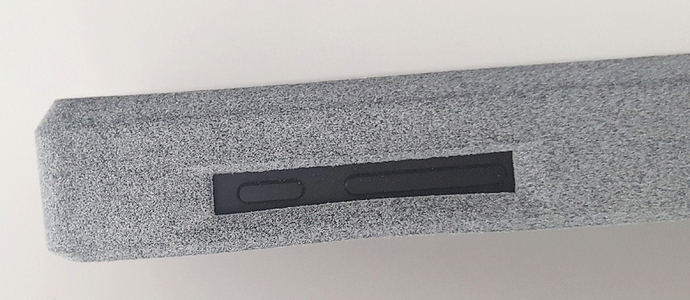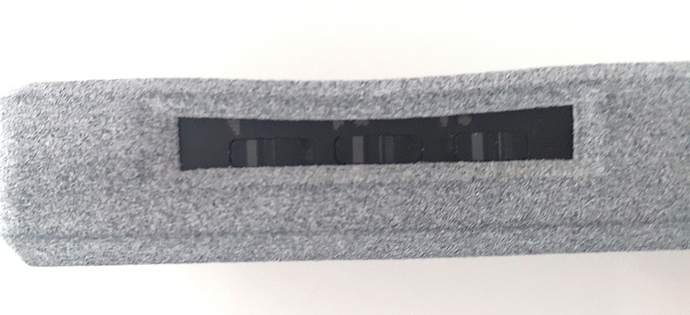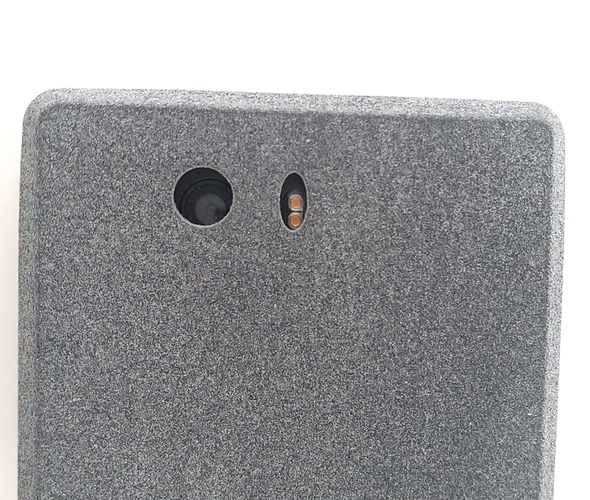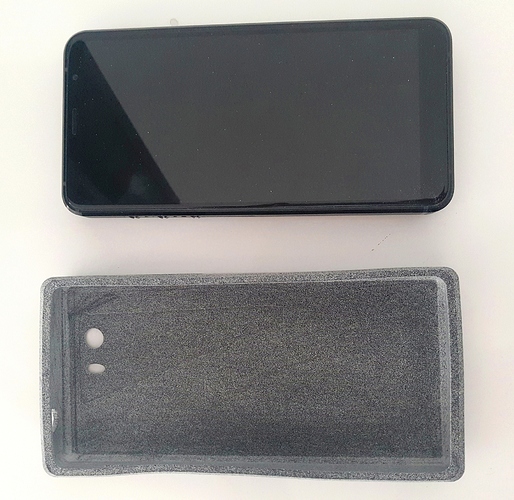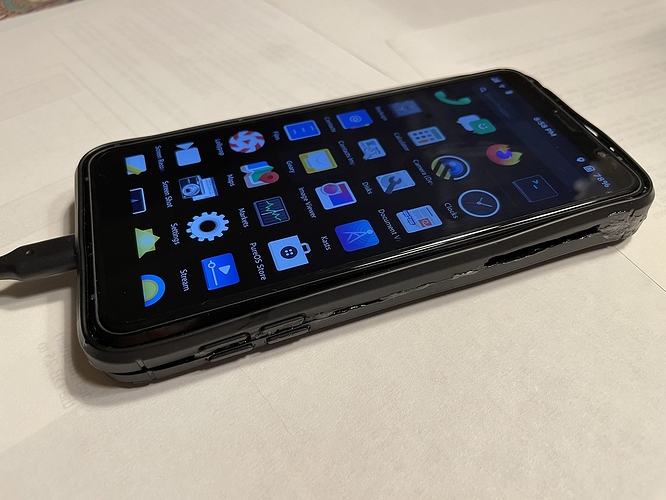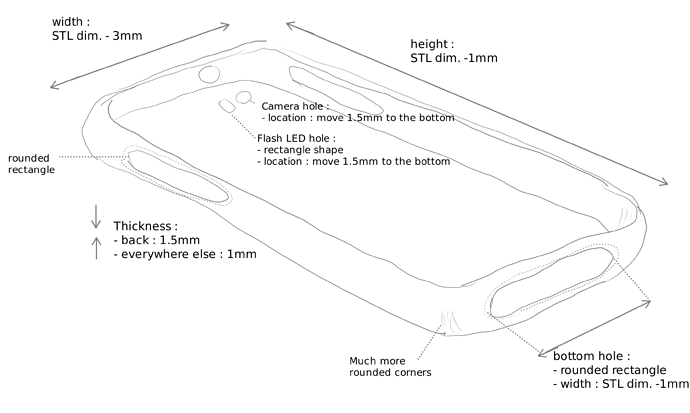Thank you for sharing those links. Seeing gsmscore website, I’ve found that the Samsung Galaxy J7 2017 has almost the same Height and Width than the Librem 5, so I had the idea to buy a TPU shell for experimental purposes. Not sure if it works or if the final result will be aesthetic, but I have to try!
I also think about the screen replacement. This one is a big concern as I can’t find it in the accessories part of the shop (maybe I missed something such as wrong section of the store).
Anything that you 3D print will shatter or crack the first time stress is applied to it. You need a strong case and display protector. I would look more in to milling something bigger to fit, as opposed to printing. Something slightly bigger might be made to fit using thick (foam embedded) two-sided tape to take up any slack space and/or help hold the phone in to the case if the case is slightly bigger.
Or a belt sander may be easier than milling. Especially if it only adjusting the corners.
Another idea: after separating the back of the case from the sides, use adhesive Velcro squares to attach it to the back of the L5, cutting a hole for the camera and flash, if necessary. 
Hello, thank you for your proposal, I am a bit discouraged but I shall maybe try it. Please find my feedback about my DIY FAIL ^^ :
First of all, the TPU material is very good to make cases : I can feel it can protect the phone. The dimensions (Height & Width) fit exactly on the L5, the thickness… not at all !
After cutting the back side of the case, I could finally put the case around the L5, however :
- the borders don’t hold the phone anymore because of the missing back: there is no more support.
- these borders are too thin for the sides of the L5. It is difficult to make cutouts at the buttons and switches.
Conclusion: it is better to print a 3D TPU shell (and ideally that Purism proposes an official shell via a partnership).
My question is: looking at this STL file, I can’t quite figure out if the edges protect the screen by wrapping it slightly or if it’s flat (and therefore not protective). It looks like it does protect the screen, what do you think about it?
Last but not least, do you think it is possible to round the corners a little more to avoid having a too rectangular shape?
Thank you !
Hi, so has anyone found a source you can send these 3d designs to and get something printed? not having ever had anything 3d printed I wonder how hard it is… maybe I will just put my phone in bubble-wrap until I get something figured out LOL
I’m using this fitBag (the 3rd item in this table https://source.puri.sm/Librem5/community-wiki/-/wikis/Tested%20Accessories#cases) and I was since the beginning afraid that the L5 could fall down while pulling it out of the bag or putting it in again. And yesterday it happened. I was able to put my shoe on the point where it would hit the ground and so no damage happened. As a rule of thump I will do it in the future only above a table or above my lap.
A good case should protect the display and the four corners of the L5 and should allow that the heat goes out too.
How big a consideration would heat dissipation be? If the case covered the back, should it have something like a grid of little holes or something to let heat out?
I think more important are holes on the side because the heat gets delivered through the metallic side frames of the L5. This must be tested, though.
So here I am again for a 3D case feedback !
I decided to take this STL file proposed in the gitlab and not having a 3D printer, I sent it to a professional who uses MJF injection technology, and I chose TPU for its flexibility and at the same time robustness properties.
The shell alone:
the 3D printing shell made in MJF/TPU is very impressive: no streaks, no burrs, the holes are respected and the angles too. As if it came from a factory. The thickness of the walls gives an impression of great strength, and the rough texture gives a feeling of grip that I particularly appreciate.
Assembly of the shell on the smartphone:
Dimensions:
the dimensions are good but not perfect in my opinion. The holes on the sides are such that there is a slight looseness and therefore it does not fit the smartphone 100%. By analogy, to give an idea, let’s say it fits horizontally at 95% without the shell coming off easily. Buttons and switches remain accessible even if you have to make a small effort to reach them (the author of the STL file played on the relief with “chamfers” to facilitate access to the buttons, it’s a good idea), and the USB and audio jack connectors are wide enough to connect cables without being blocked by the shell.
Robustness:
we are not disappointed, the person who made the STL file had the very good idea to cover the relief of the 2.5D screen, which is the most critical part of the device. On several fall scenarios, the shell might protects the smartphone well but there may be scenarios where the screen can break (eg: violently flat, a large part of the shock could be absorbed by the shell, but it may be that the deformation causes a floor-screen contact) and that’s where a glass screen protector can help to absorb the rest of the shock.
Aesthetics:
this is where the real problem lies. I already noticed it a while ago: the corners are almost rectangular, a lot of holes are too, and the thickness makes it look too rectangular and massive in hand / on the table. With this case, we move away from the shape of a smartphone, especially when you stick the device on your cheek to call.
Conclusion:
There are definitely areas of improvement for this STL file. I have in mind a few things to improve:
- round the corners at best to avoid the massive rectangular effect
- round all the holes to have a more welcoming design
- except for the part surrounding the 2.5D screen, reduce the thickness to the strict minimum (1.5mm at the back, 1mm everywhere else) to gain in thinness
- reduce the height (I mean vertically distance jack audio <-> USB type-C) by 1mm
- reduce the width (horizontal distance, I mean distance kill switches <-> vol buttons) of the part of the shell close to the screen (the bottom part is OK) by 3 mm to make the shell more flat against the smartphone
- correct the position of the speaker holes (at the bottom) and the camera holes on the back because they are not aligned:
- speakers : center toward the USB type-C by 1mm for each hole
- camera (point of view seeing the back of the smartphone) : correct the hole to 1mm to the right, and 1.5mm to the bottom.
- flash LED hole: correct the hole to 1.5mm to the bottom, and change the shape from a rugby ball to a rounded rectangle.
- reduce the height of the speakers holes by 3mm
- make rounded chamfers for each hole for aesthetics
If someone knows an open-source and user-friendly (I am a totally beginner) software to help me to modify this STL file, please do not hesitate. If you are afraid that it will take me years to get the software in hand, you can also start making STL updates following my comments!
Would you mind posting a picture or two?
Here are the photos of the shell showing an overview, and what to improve.
As you can see, the square shell increases the thickness. Comparing with the DIY shell of @Zimmy , it seems that I have something more imposing, and less rounded with this 3D shell :
I tried 3D rendering with TinkerCAD (open to beginners) but nothing works: I can’t easily modify the original STL file due to lack of skills, so I made a sketch of what I want to correct on the original STL file, based on my previous feedback :
Question :
Does anyone have the skills and time to modify the original STL file according to my recommendations? That would be really great, and we could add it to the Purism git webpage !
Does the hole over the volume and power buttons need to be widened vertically a bit? It seems narrow for a fingertip to effectively use the volume button. But if it’s easy as is, then disregard.
I also wonder if the camera hole needs to be enlarged to prevent the case from ruining photos…?
Volume & Power buttons + kill switches are reachable with the case, but you have to make an effort (however it is not annoying at all). Maybe as you said, we can increase the volume & power hole for about 0.5 to 1mm maximum.
Yes exactly. On my sketch, you can see that I ask to move down the camera + flash LED holes to 1.5mm because they are not aligned with the hardware. Also, I think we can change the current “rugby” shaped hole of the flash LED into a more rounded rectangle, more harmonious shape.
I think it would be very cool if somebody having a 3D printer with flexible TPU filament could modify the original STL, test and try the new case because the current one has qualities but on the other side, it can be improve because it is very thick and “squared” with a few misalignment.
I think @Zimmy case shape is the objective to reach.
As a concept, stretch-to-fit cases like these may be possible: https://www.amazon.com/Universal-Elastic-Silicone-R0172WW-R0170WW/dp/B0863QDSRT and https://www.amazon.com/Universal-Lanyard-Silicone-Compatible-Smartphones/dp/B082TQ42Y8/
One could even DIY one with a couple of stretchy bands.
By far this can be the best solution for those who want to have something ready to use and who like this design
I was just looking at this, does anyone know if thickness can be supported by these?
I’m looking for good bumper case
